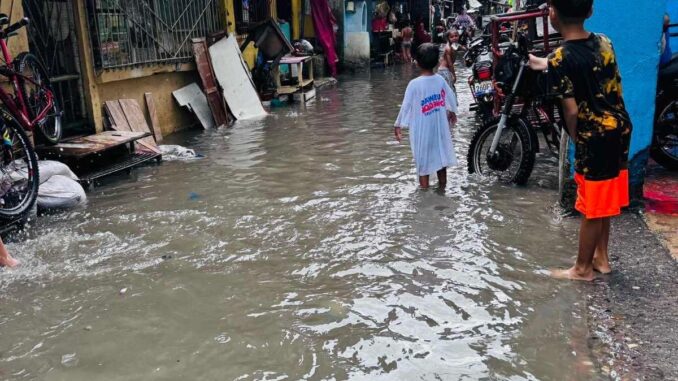
Iloilo City faces the risk of becoming the “next Venice” if urgent measures are not taken to address the alarming rate of land subsidence, currently estimated at 9 millimeters per year.
This stark warning comes from disaster resilience expert Jessica Dator-Bercilla, citing a study by the University of the Philippines’ (UP) project, Nationwide Operational Assessment of Hazards (NOAH).
Bercilla emphasized the need for immediate action from the local government to mitigate the ongoing ground movement, noting that the city is already in a precarious position.
“If people do not cooperate, particularly in the business sector, we will have to learn to live with the flooding. The public should be prepared, much like Venice,” Bercilla stated during a meeting called by Iloilo City Mayor Jerry Treñas.
“If we do not help the government, we must brace for that scenario.”
Iloilo City’s foundation consists of low, flat land made of loose, porous soil, which lacks the stability of more compact, rocky ground. Its low coastal elevation also makes it naturally susceptible to flooding, exacerbating the risks posed by subsidence.
Stricter regulation of wells
Experts suggest that the Iloilo City government should strictly regulate existing water wells and control the construction of new ones.
The proposed regulations include managing the extent of water pumping by service providers, considering the possibility of saltwater intrusion, spacing requirements, and withdrawal rates for wells.
Bercilla highlighted the importance of follow-up work through surveying and mapping both shallow and deep-water wells, estimating extraction rates, well depths, and whether electric pumps are used for extraction.
“We need hard data for this because if we impose regulations, stakeholders will demand justification, which will provide the necessary evidence,” she explained.
She also emphasized that if a correlation is found between the number of wells and the rate of subsidence, the city government may need to expand water services in areas with high subsidence rates.
Improved drainage, sustainable practices
With a “relatively fast” subsidence rate of 9 mm/year, Bercilla suggested that the city government update its topographic maps and review the capacity of its drainage systems.
She called for the expansion and deepening of drainage systems to increase their capacity and accommodate the impacts of urbanization and climate change.
Bercilla urged the public to avoid converting land into concrete, which prevents runoff from seeping into the ground and replenishing groundwater supplies. Instead, maintaining permeable surfaces could help mitigate some of the subsidence effects.
Focus areas and recommendations
A UP study identified the districts of Mandurriao, Molo, and La Paz as particularly affected, with subsidence rates of approximately -8 millimeters per year. These areas are at high risk due to their dense populations and rapid urbanization.
Mandurriao and Molo have been noted as the “hardest hit” districts because of significant residential developments and other urban improvements.
The study warned that subsidence could lead to severe flooding in the City Proper district, which has already experienced high-water levels during high tides, even in dry conditions.
As Iloilo City contemplates its future, the call to action is clear: immediate and sustained efforts are needed to prevent a Venice-like scenario from becoming a reality.


Be the first to comment